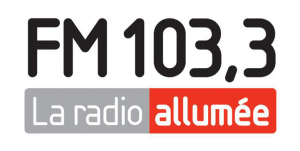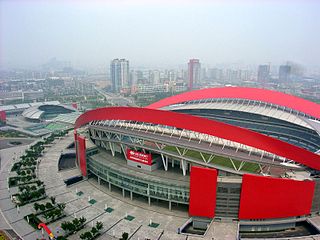
The 1976 Summer Olympics, officially known as the Games of the XXI Olympiad and officially branded as Montreal 1976, were an international multi-sport event held from July 17 to August 1, 1976, in Montreal, Quebec, Canada. Montreal was awarded the rights to the 1976 Games at the 69th IOC Session in Amsterdam on May 12, 1970, over the bids of Moscow and Los Angeles. It was the first and, so far, only Summer Olympic Games to be held in Canada. Toronto hosted the 1976 Summer Paralympics the same year as the Montreal Olympics, which still remains the only Summer Paralympics to be held in Canada. Calgary and Vancouver later hosted the Winter Olympic Games in 1988 and 2010, respectively.

The Montreal Biodome is a facility located at Olympic Park in the Mercier–Hochelaga-Maisonneuve neighbourhood of Montreal, Quebec, Canada, that allows visitors to walk through replicas of four ecosystems found in the Americas. The building was originally constructed for the 1976 Olympic Games as a velodrome with 2,600 seats. It hosted both track cycling and judo events. Renovations on the building began in 1989 and in 1992 the indoor nature exhibit was opened.

Olympic Stadium is a multi-purpose stadium in Montreal, Canada, located at Olympic Park in the Hochelaga-Maisonneuve district of the city. Built in the mid-1970s as the main venue for the 1976 Summer Olympics, it is nicknamed "The Big O", a reference to both its name and to the doughnut-shape of the permanent component of the stadium's roof. It is also disparagingly referred to as "The Big Owe" in reference to the high cost of its construction and of hosting the 1976 Olympics as a whole.

Roger Taillibert was a French architect, active as a designer from about 1963 to 1987.

Swimming has been a sport at every modern Summer Olympics. It has been open to women since 1912. At the Olympics, swimming has the second-highest number of medal-contested events.

The Complexe sportif Claude-Robillard, abbreviated CSCR, is a multi-purpose sport facility, located in Montreal, Quebec, Canada, in the borough of Ahuntsic-Cartierville.

The London Aquatics Centre is an indoor facility with two 50-metre (164-foot) swimming pools and a 25-metre (82-foot) diving pool in Queen Elizabeth Olympic Park in Stratford, London. The centre, designed by architect Zaha Hadid as one of the main venues of the 2012 Summer Olympics and the 2012 Summer Paralympics, was used for the swimming, diving and synchronised swimming events. After significant modification, the centre opened to the public in March 2014.

CIBL-FM is a French-language community radio station located in Montreal, Quebec, Canada. It broadcasts using a directional antenna with an average effective radiated power of 872 watts and a peak effective radiated power of 2,800 watts as a Class A station.

CHAA-FM is a French-language Canadian radio station located in Longueuil, Quebec, near Montreal.

Nanjing Olympic Sports Centre Stadium is a multi-purpose stadium located in Hexi New Town, Nanjing, Jiangsu, China. It is primarily used for football and athletics events and is the centerpiece of a larger Olympic Park complex which also includes the Nanjing Olympic Sports Center Gymnasium, an aquatics centre, a tennis centre, and other recreational sports venues.

The National Sports and Culture Centre d'Coque(French: Centre National Sportif et Culturel d'Coque), better known simply as d'Coque, is a sporting and cultural venue with an indoor arena and Olympic-sized swimming pool, amongst other facilities, in Kirchberg, a quarter of Luxembourg City, in Luxembourg. More recently it has expanded into providing onsite hotel services, and acting as a conference venue.

Helsinki Swimming Stadium is an outdoor swimming venue in Helsinki, Finland, located in the Eläintarha area to the northeast of the Helsinki Olympic Stadium.

The Montreal Olympic Park is a sports and entertainment precinct located in the Hochelaga-Maisonneuve neighbourhood of Montreal, Quebec. It is separated from Maisonneuve Park and the Montreal Botanical Garden by Sherbrooke Street on its northern end, and bordered by Viau Street to its east, Pierre de Coubertin Avenue to its south, and Pie-IX Boulevard to its west.

For the 1976 Summer Olympics, a total of twenty-seven sports venues were used. Several venues used had been in existence before Montreal made its first Olympic bid in the late 1930s. By the 1950s, Montreal's bid for the Olympics shifted from Winter to Summer before it was finally awarded the 1976 Summer Games in 1970. Strikes in 1974 and 1975 affected construction of the Montreal Olympic Park, most notably the stadium, pool, and velodrome, to the point where the FINA President threatened to not have the diving, swimming, and water polo events take place there for the games in early 1976 though all three venues were completed as best as possible prior to the 1976 Games. 27 swimming world records were set as a result. The oldest stadium, Molson Stadium at McGill University, would be converted into artificial turf for the field hockey tournaments while the sailing program in Kingston, Ontario, would be held in freshwater, both for the first time in Summer Olympic history. Indoor track cycling took place at the Olympics for the first time at the velodrome. Once the Olympics finished, the Montreal Expos and Montreal Alouettes moved into Olympic Stadium, staying until 2004 and 1997, respectively. The Montreal Canadiens remained at the Montreal Forum until they moved to the Molson Centre in March 1996. In 1992, the velodrome was converted into an indoor zoo now known as the Montreal Biodôme. Île-Notre Dame hosted a canoe sprint world championships and two rowing world championships since the 1976 Games, but the area north of the basin on the island has been host to the Formula One Canadian Grand Prix on an almost annual basis since 1978.
The Toronto Pan Am Sports Centre is a sports complex in Toronto, Ontario, Canada. Co-owned by the City of Toronto and the University of Toronto Scarborough, it is operated by TPASC Inc., with programming offered by both the university and Toronto Parks, Forestry & Recreation. It is located on the northern grounds of the university's campus near the intersection of Highway 401 and Morningside Avenue.

Montreal Tower, part of the city's Olympic Stadium and Parc Olympique and formerly known as the Olympic Tower, is the tallest inclined structure in the world at 165-metre (541 ft), and the tenth tallest structure in Montreal. It was designed by architect Roger Taillibert and leans at an angle of 45°, much larger than that of the Leaning Tower of Pisa.
Pôle sportif et culturel Chamonix Nord is an ensemble of educational and sports facilities located in the northern part of Chamonix, Haute-Savoie, France. The project was the brainchild of Chamonix's mayor, former minister and mountaineer Maurice Herzog, and architect Roger Taillibert, with engineering support from Heinz Isler.

The Paris Olympic Aquatic Centre is an aquatic centre located in Saint-Denis, France that is currently hosting aquatic sporting events for the ongoing 2024 Summer Olympics in Paris. Located in the heart of the Plaine Saulnier, opposite the Stade de France, in which it is connected to by a footbridge spanning the A1 autoroute, it is hosting the diving, water polo, and artistic swimming competitions. It was built under the management of the Métropole du Grand Paris.





















